9 Concrete Patio Finishes (Types & Designs)
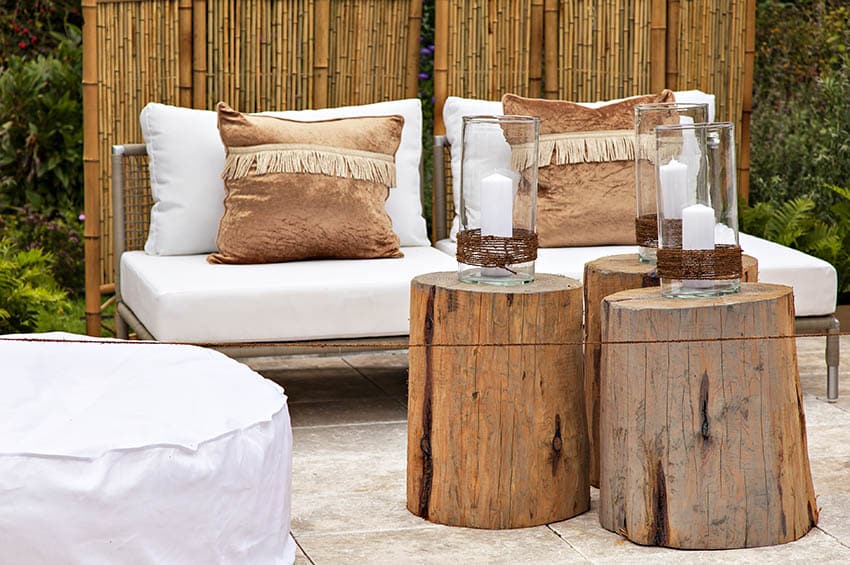
A patio is a great architectural element to add to a home. It provides you with a convenient place to enjoy the outdoors without moving too far from the comforts of your home. It also adds to the value of your home if and when you resell it. Concrete patios are a particularly popular type as they are not just aesthetically pleasing, but they are also sturdy and easy to maintain. One of the most important things to consider when adding a paved patio to your home is what finish to use.
When constructing a concrete patio, you will need to finish after the cement has poured and as it’s starting to harden. Finishing is shaping and smoothing the surface to create an attractive and sturdy surface. In this post, we will look at some attractive types of concrete patio finishes that you can consider.
Types of Concrete Finishes for Patios
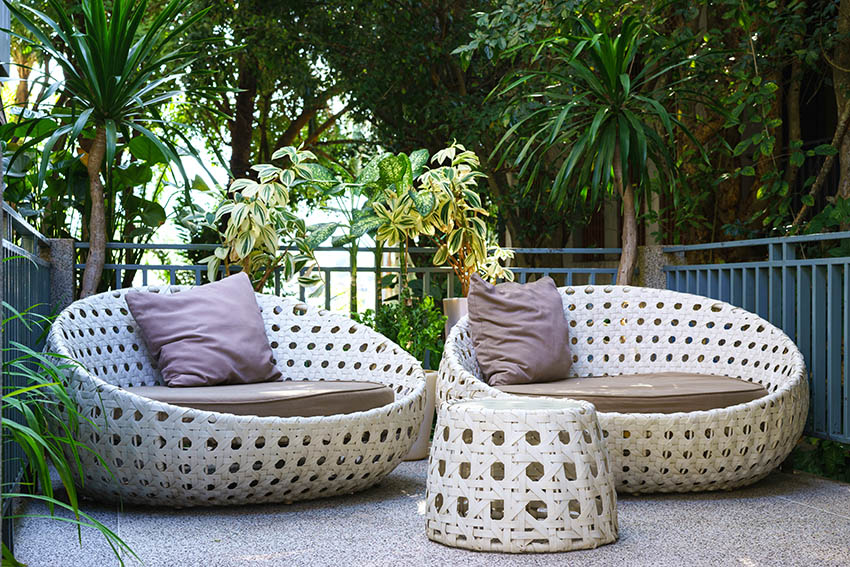
There are several types of popular concrete finishes that you can consider for your outdoor patio. You can choose the most attractive one to you and will fit your overall image for how you want your home and garden to look.
We will also tell you how to maintain these surfaces to help you choose the best one for your lifestyle and needs. See more types of patios & materials here.
Smooth Concrete (Trowel Finish)
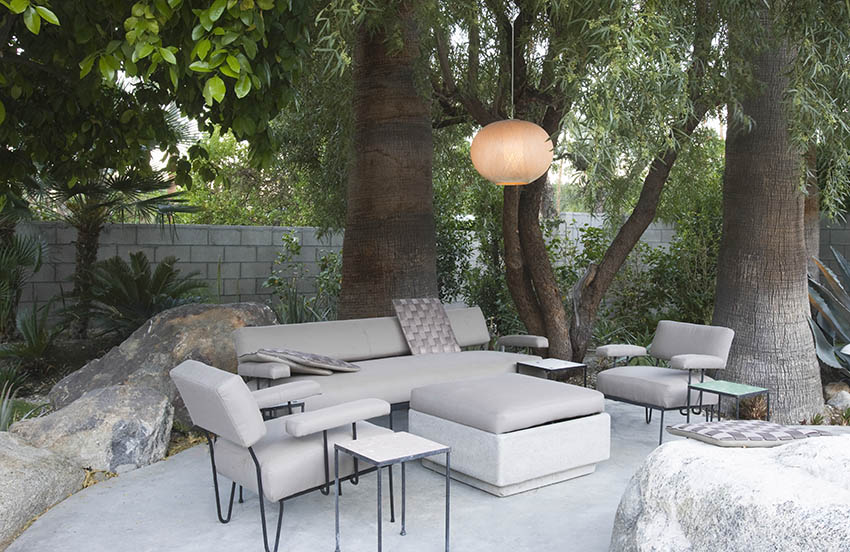
The smooth concrete patio finish, also known as the trowel finish, is the most basic type for a paved patio. To achieve this effect, a trowel is passed over the surface after it is poured. The result is a smooth surface that many find attractive.
Take note; that a trowel finish may result in a surface that can get very slippery when wet.
Broom Finish
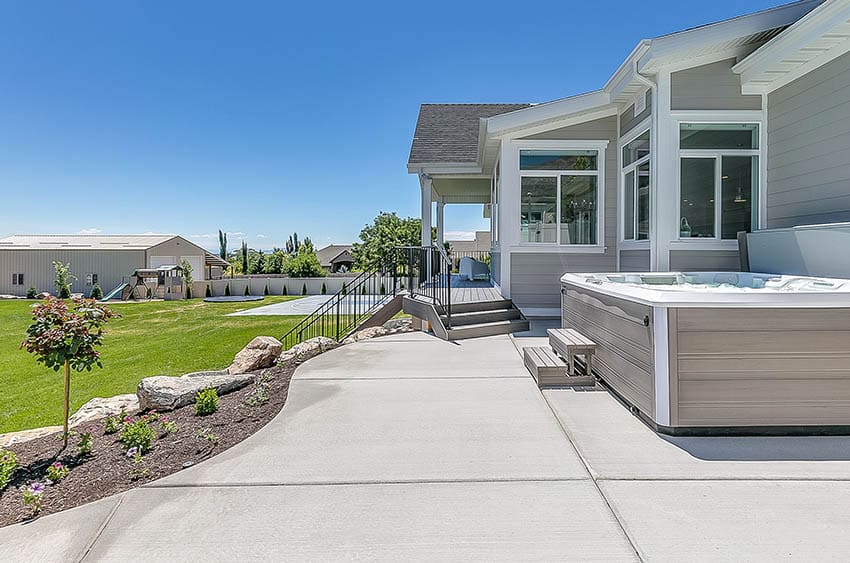
A broom-finish concrete patio is achieved similarly to a trowel finish, except in this case, what is passed over the surface of the poured concrete is a broom.
Usually, a stiff, flat brush broom is used to achieve this finish. The stiff bristles are deliberately pressed into the surfaces to leave marks. The result is an interesting, slightly ridged textured surface.
This is a simple and easy finish for a concrete patio, and it has the additional advantages of improving the surface’s friction and increasing the surface’s ability to dry.
The ridges create friction between your shoes and the patio floor, decreasing the chances of slipping. Meanwhile, if the patio gets wet due to rain or a spill, the ridges will ensure the liquids flow in one direction and drain instead of pooling like they would on a smooth surface.
To clean a broom finish surface, you need to regularly sweep debris, such as fallen leaves, off and then rinse the surface with a hose. If there are any stubborn stains, you should be able to get them out by scrubbing the area with soap and water.
If you are in an area that experiences winter or heavy rains, you might want to consider sealing your concrete patio to protect it from wear.
Brushed Finish
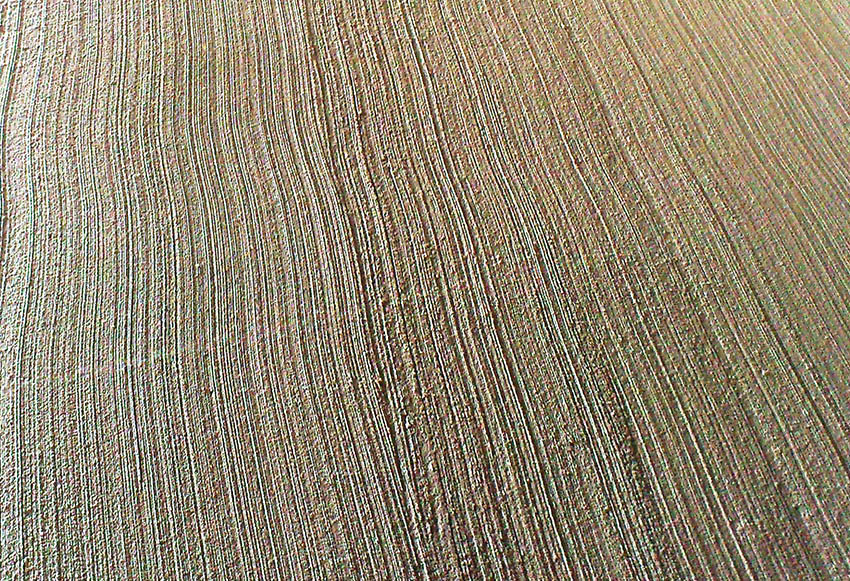
The term brushed concrete patio finish is often used interchangeably with broom-finished. Both finishes require you to run the bristles of a brush or flat broom over the surface of drying cement to create a series of small, parallel ridges.
What some might consider the difference between a brushed and a broom finish is when you use a broom, you are standing over the surface using the long handle to press the bristles into the material before curing.
With a brush finish, you are crouched over the concrete with a brush in your hands, similar to how you would work with a trowel.
You can clean and maintain your brushed concrete like a broom-finished patio. For both types of finishes, if normal cleaning methods don’t remove the stains, you might want to consider power washing the surface.
Stamped Concrete

A series of rubber mats are placed on drying concrete to create a stamped finish. These mats can come in a variety of patterns.
Many mimic the texture of natural stone or even wood or have more fanciful patterns. These mats are used to leave an impression on the drying cement.
It’s a popular finishing option for patios because of the variety of patterns and textures that stamping concrete can create.
It can create an attractive surface that can suit almost any design style, and it also has the advantage of, again, increasing friction and reducing the chance of slipping.
You must sweep and wash a stamped concrete patio finish regularly to prevent dirt buildup, especially in the “cracks” or indentations.
If the dirt becomes too ingrained, you might have to pressure wash the patio. It will help to seal the concrete after it dries and reseal every 2 to 3 years.
Pebble Finish Concrete
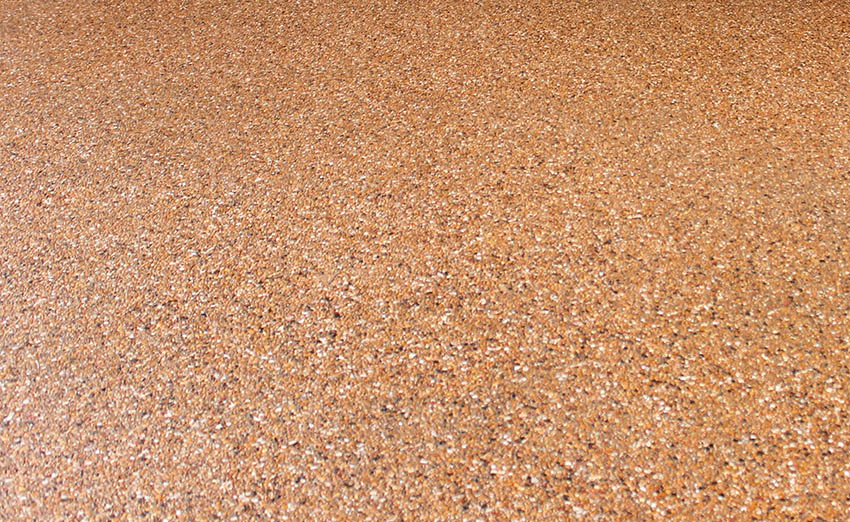
To get a pebble finish, you scatter small pebbles onto the surface of the wet concrete. This creates an interesting-looking and textured surface that is slip-resistant.
You can create a deliberate pattern with chosen stones, or you can just scatter a mix of pebbles onto the surface.
Once it is done, lay a board over the surface and press lightly to embed the pebbles into the drying cement. You can also lightly wash the surface with water or brush it to expose the pebbles further.
After the finish is set, you should be able to keep it clean by just hosing it down or scrubbing it with soap and water. Consider sealing it as well.
Exposed Aggregate Concrete
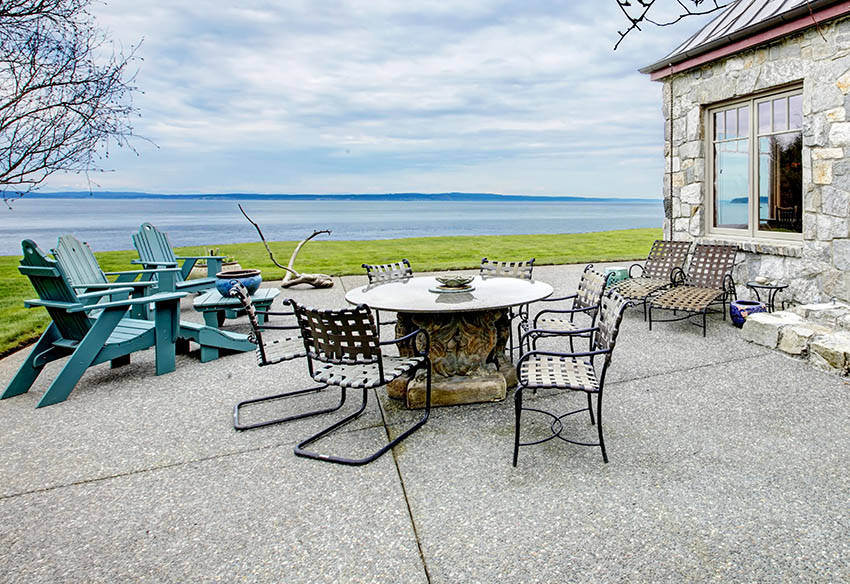
An exposed aggregate finish is achieved by stripping away the top layer of a concrete surface exposing the material underneath.
This creates a textured surface that is nicely patterned and interesting to look at, decreasing the chances of slipping or skidding.
After the cement is laid, the surface mortar is removed by brushing and washing at the surface. Some contractors will use a chemical surface retarder, which delays the concrete setting to give them more time to expose the aggregate.
Getting an exposed aggregate finish on an “old patio” where the concrete has already been set is possible by getting a contractor to use abrasive blasting on the surface. Be aware, however, that abrasive blasting can fracture and dull the aggregate surface.
It’s also advisable to apply a sealer to your exposed aggregate concrete patio. This will protect the surface and will also make it more attractive. Sealers will enhance the aggregate’s color and make the surface look deep and rich.
You should look for a sealer that is both UV resistant and non-yellowing. You can also find sealants that will repel oil, grease, and water, which will help maintain your patio and make cleaning easier.
Salt Finish
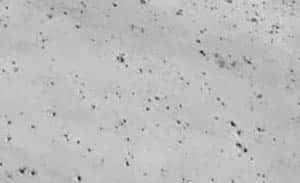
To get a salt finish, you apply a layer of rock salt on top of the drying cement. When the surface is dried and set, you remove the salt by washing it away with water.
The salt will dissolve, leaving behind small holes in the concrete. The result is a lightly pock-marked surface that has an interesting and unique texture and look.
The maintenance of a salt finish patio is similar to that of a pebble finish.
Stained Concrete
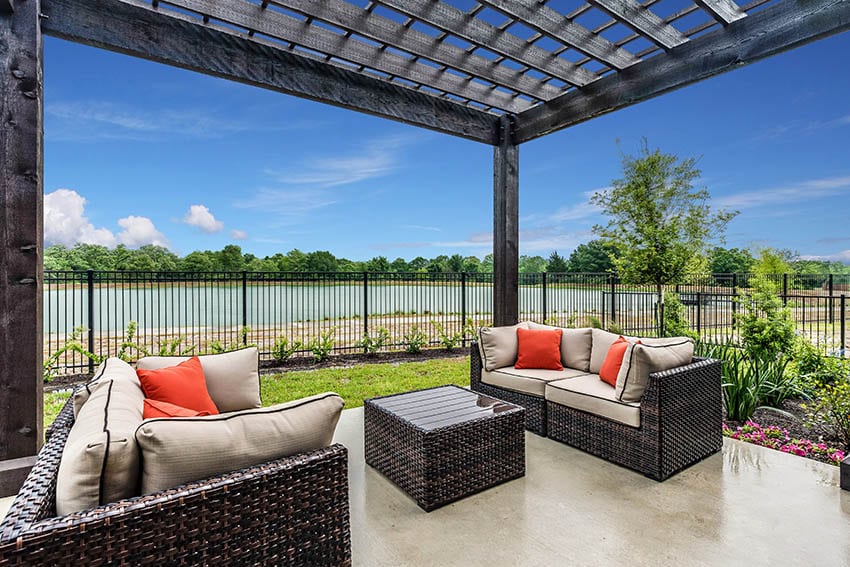
When you create a stained finish for your patio, you use acid-based chemicals that can color the concrete.
Stains are different from paint because they permeate the concrete, entering the surface’s pores. There are two general types: stains and water-based solutions. You can use stains on freshly laid pavement or old paved surfaces you want to refurbish.
Acid-based stains will produce a surface that is colored in earth tones, ranging from brown to terra cotta to a nice blue-green. On the other hand, water-based stains come in a wider variety of hues, from black and white to metallics.
A stain finish is a good choice for outdoor projects like a patio. Most stains are UV and abrasion-resistant, so they won’t wear or fade when exposed to the elements. Be careful, however, when applying them, as the stain could harm plants and grass.
You will also need to seal a patio that uses a stained concrete finish. The sealer protects the surface and enhances the finish’s gloss and color.
The patio will then need to be re-sealed every 2 or 3 years. You can also apply a glossy, clear sealant whenever the surface becomes a little dull.
Unlike some other finishes we discussed here, a stained application won’t “naturally” end in a slip-resistant surface. You’re going to need to mix an anti-slip additive to the sealer and apply it on the surface.
Colored Concrete
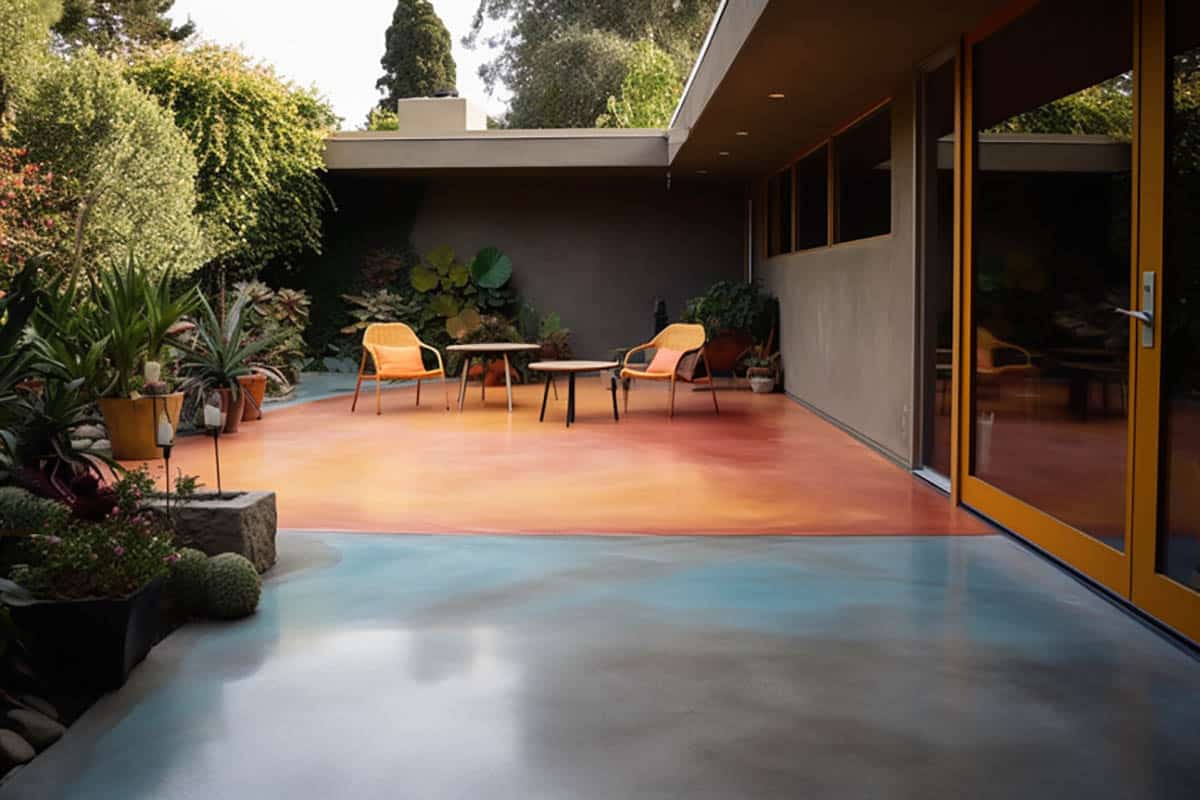
A colored concrete finish has an additive that changes the color of the cement before it is poured into a slab. The colorant is added to the cement mixture, giving it a consistent look throughout its appearance. This way, even if the surface is worn or chipped, it will have the same consistency.
The great thing about this procedure is that it offers much flexibility regarding color themes. Hues can range from earthy and subtle to vibrant and exciting, depending on your preferences and budget.
In addition to the coloring technique, other texture applications can be added to the coating, such as stamping, brooming, or polishing, to get the look and feel you desire.
This colored treatment option is similar to stain, as both involve changing the hue of the material. However, a colored application is applied to the mixture before being poured, whereas a stained project involves applying the coating after the cement has completely cured.
What are your favorite concrete patio finishes? Let us know what you like best and why in the comments. For more ideas visit our page about raised patio designs here.

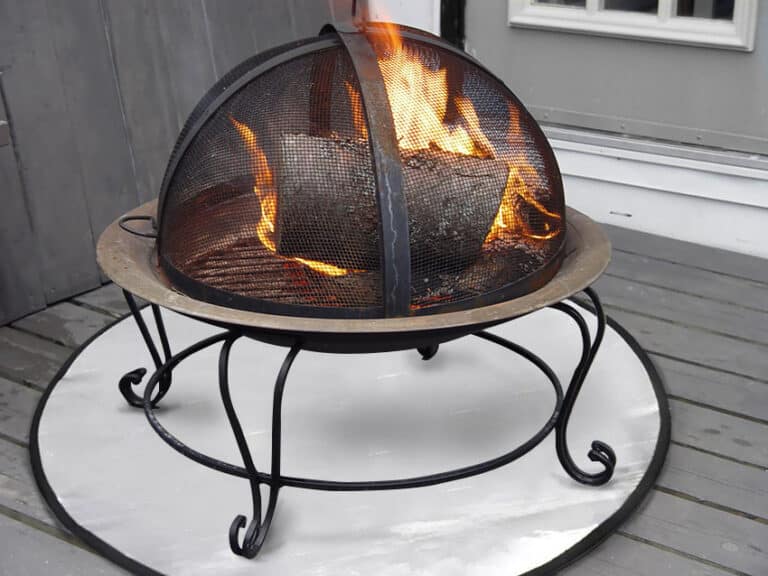
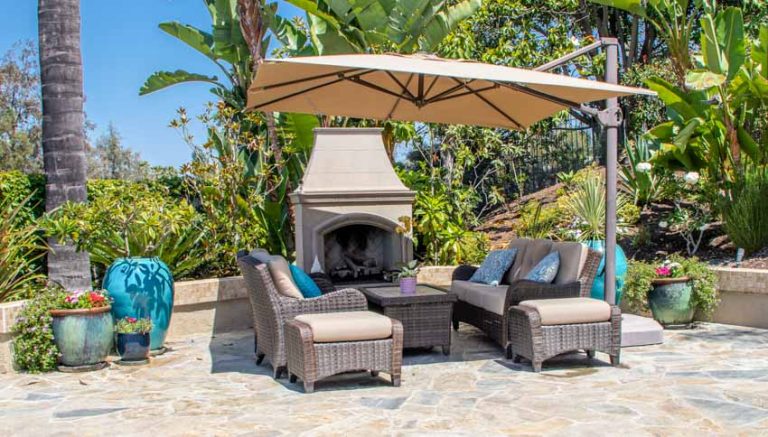

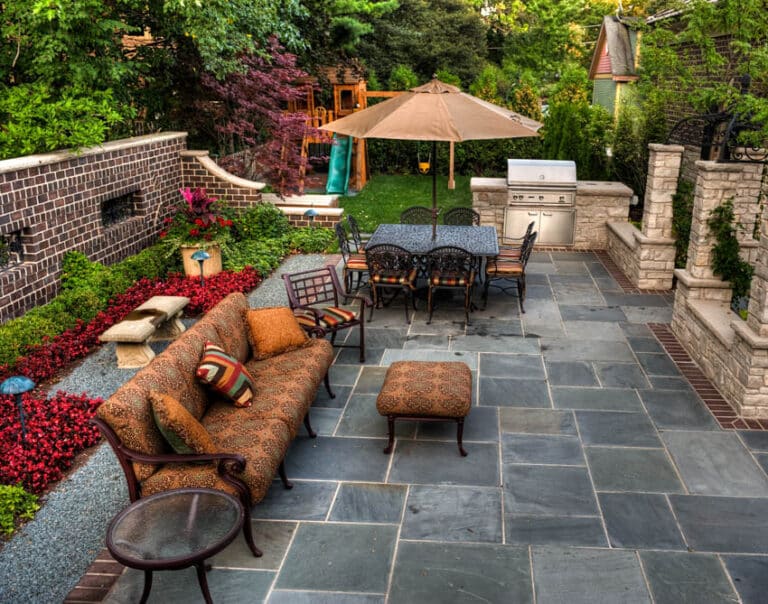
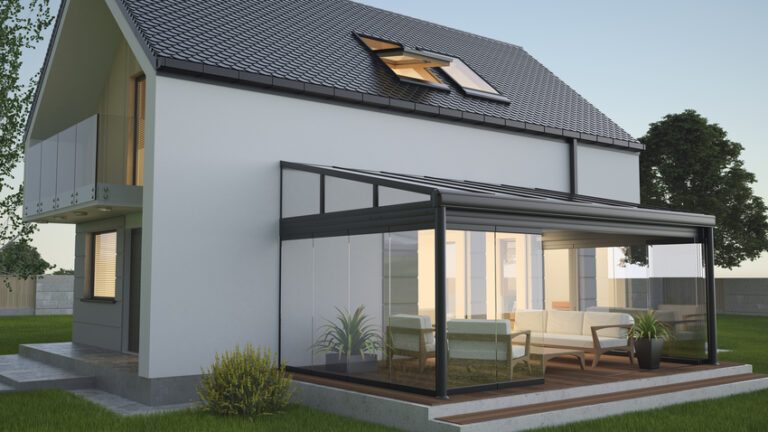
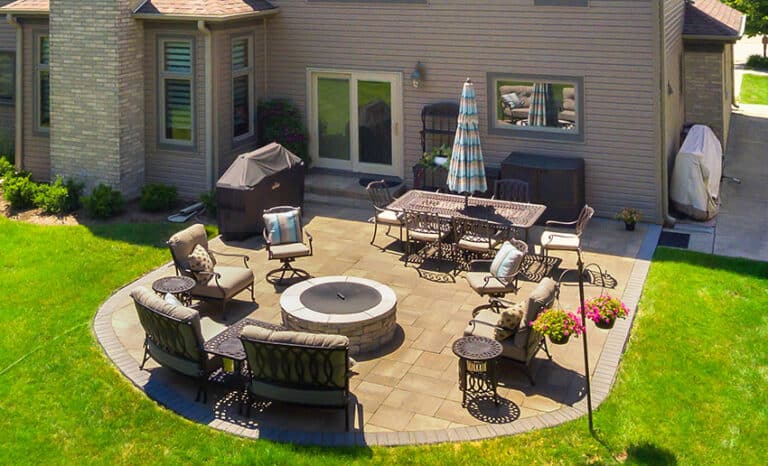
I think the best concrete patio finish is stamped. My stamped concrete patio looks beautiful and gives the area a high-end luxury feel. It is also colored so it looks unique.
When I helped to pour the concrete for my pool patio I gave it a broom finish to help with traction. It works well to help the kids from slipping when the area gets wet and you know how kids like to run around. I think stamped concrete would have worked just as well. It just wasn’t as popular back when I had my patio put in.
We went with stamped concrete for our backyard patio since it looks a lot like pavers. In my opinion stamped concrete is the best since it can give you the style you want and when I priced it compared to pavers it cost less.
Weve got a trowel finish what you call the smooth finish patio and its pretty plain. Id like to have a more exciting patio look. How much does it cost to add a finish over an existing patio??
You can resurface your concrete patio by using a concrete based overlay. With this you can choose the type of concrete finish you like best such as a stamped, stenciled, stained and even add different colors to the cement to get the exact look you want.
The cost to resurface your concrete patio will vary depending on where you live. As a general rule of thumb for a basic concrete patio resurface it will cost from $4 to $8 per square foot for a basic design. Extra patio features can run up the price to over $20 per sq. ft.